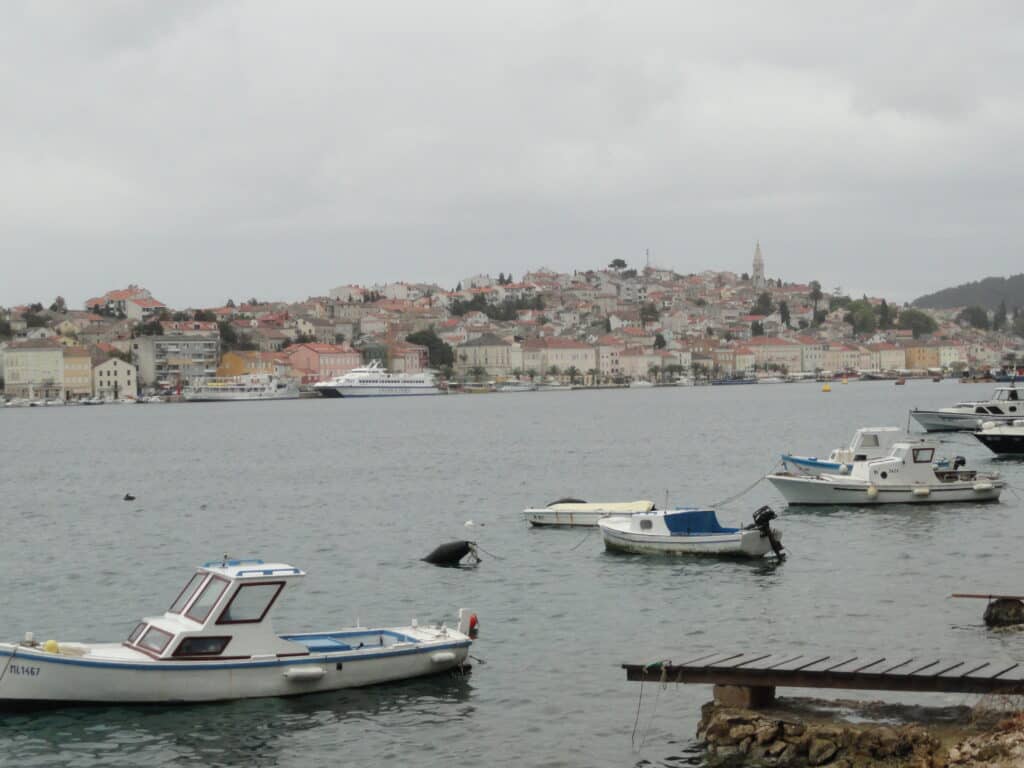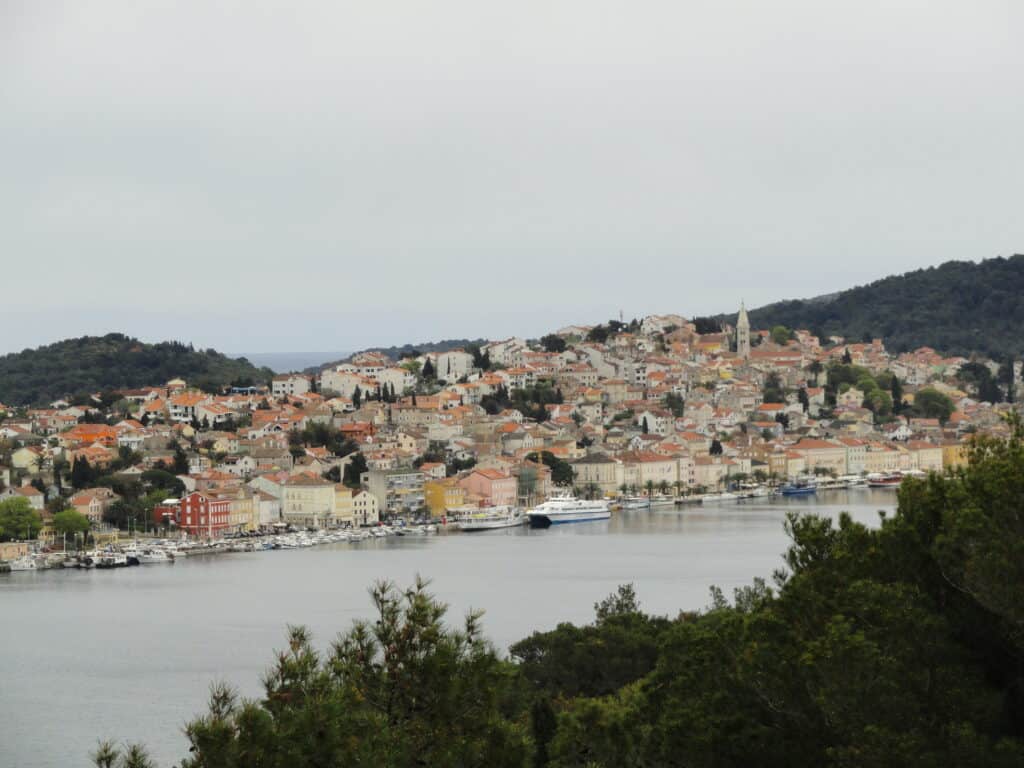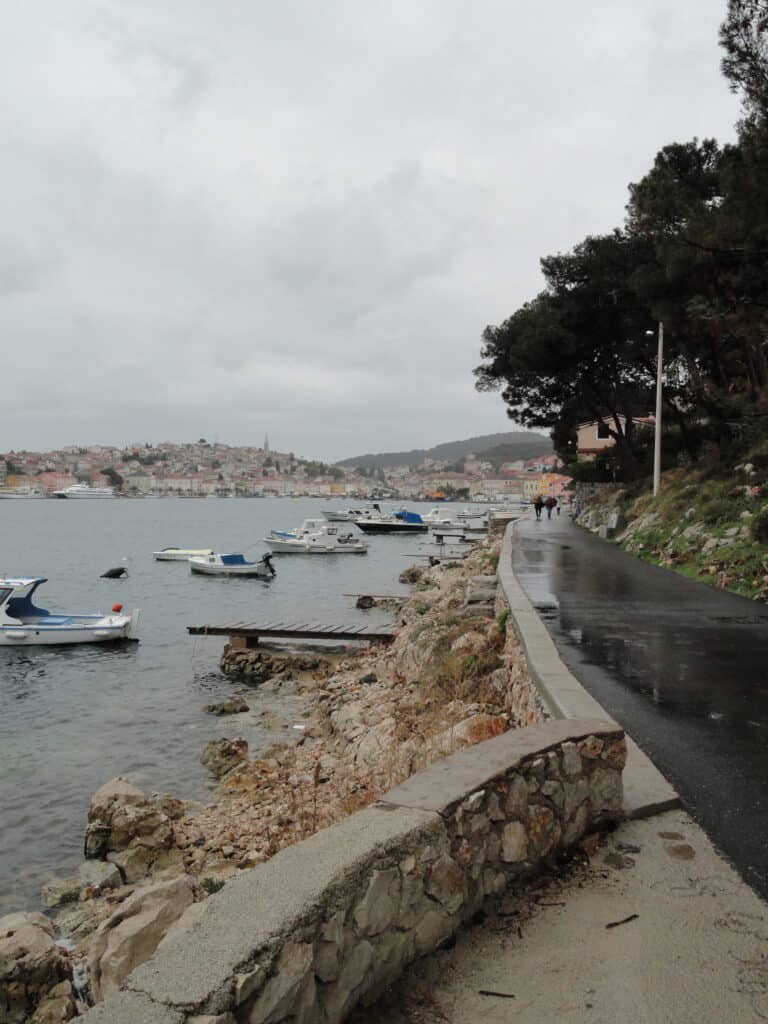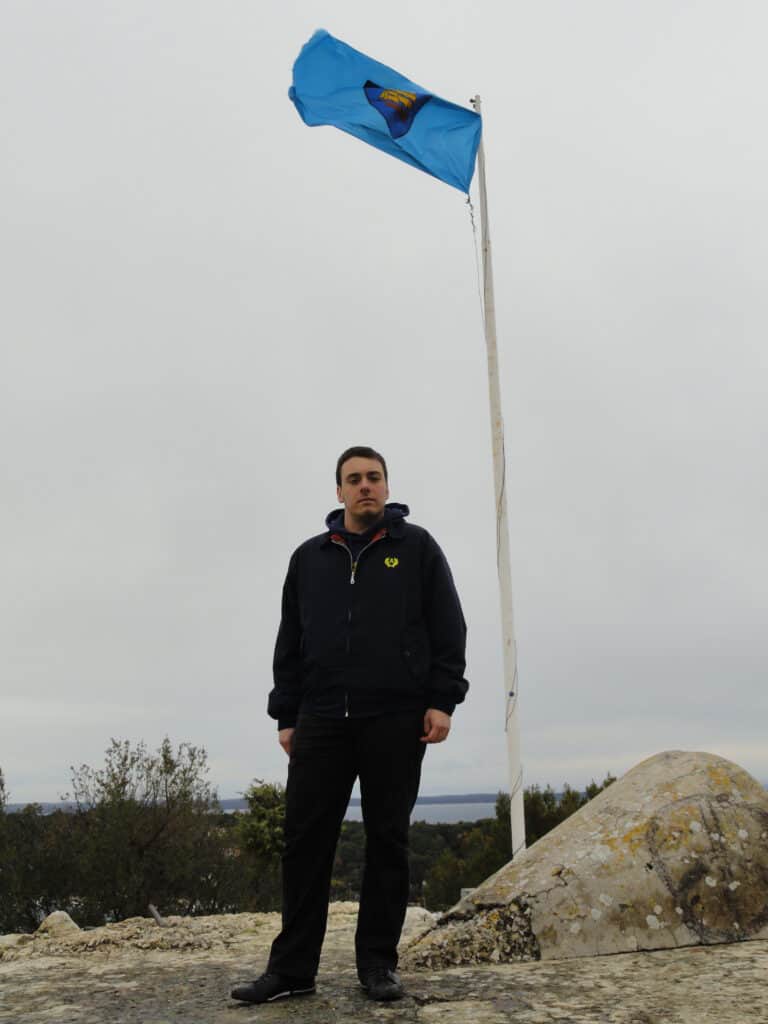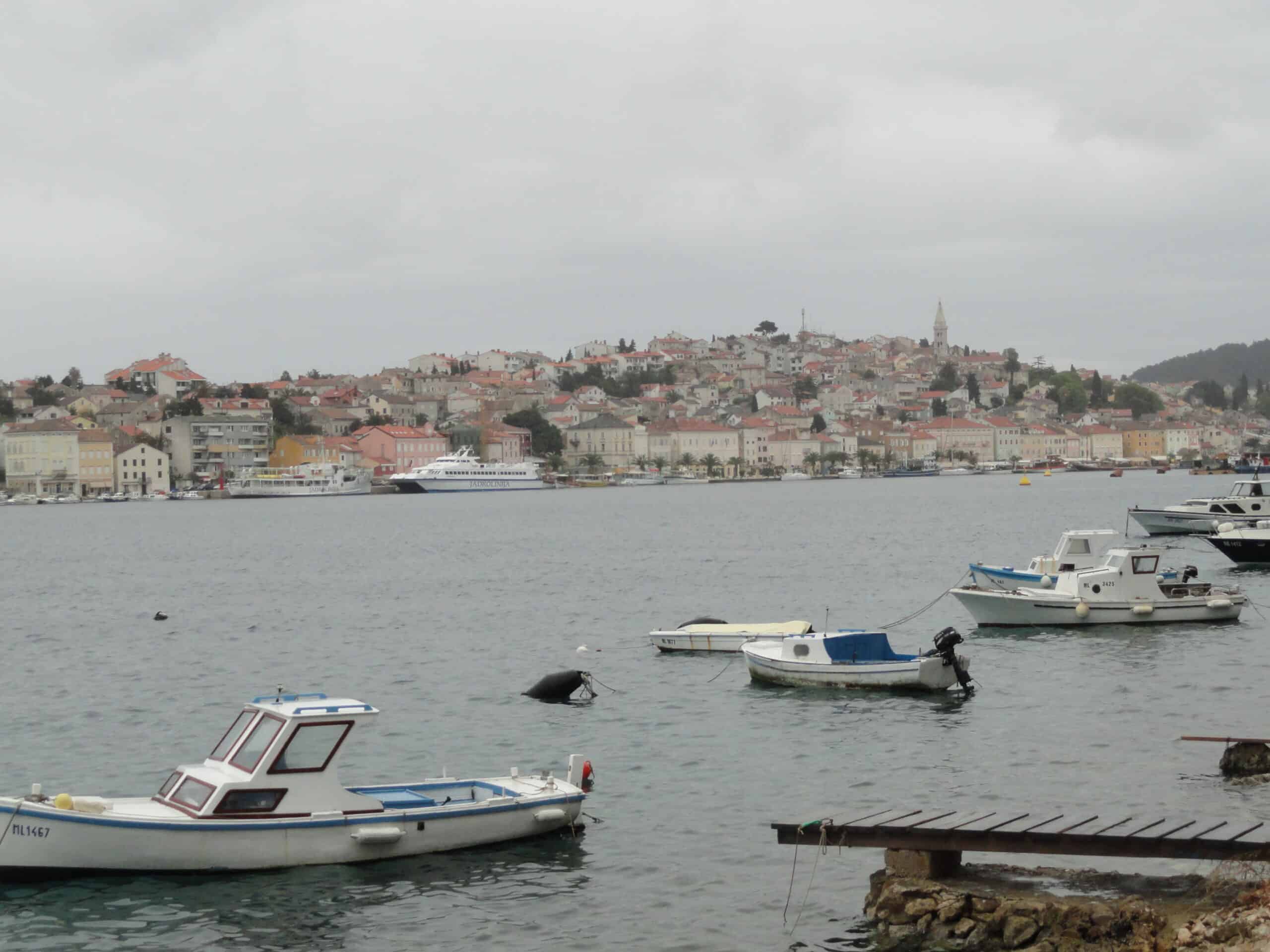
Mali Lošinj is located in a large sea valley. Its houses are arranged in an amphitheatre around the port and are the economic and administrative centre of the island of Lošinj.
Tradition wants that the port was created by the Romans in 32 BC when Octavian’s fleet had to stop at the island and wait for the end of winter before resuming navigation. Since then, the southern part of the port of Lošinj is called the valley of Augustus.
The central square, which is located in the eastern part, houses the memorial to the war of liberation.
You will find the church of San Nicola with a bell tower at the back along this road. While going up from the square, you will find the Bardina staircase that leads to the 1696 square of the Cathedral of Mali Lošinj, on Mount Calvary.
Behind the church of Mali Lošinj, there are the remains of the walls of an ancient Venetian fortress and to the south what remains of the castle called Fortica or Forte San Martino with a tower located near the church of the Crucifix.
The central square starts the Riva Priko, where the chapel of Saint Anthony is located, reminiscent of a Greek temple.
Near the church of Saint Anthony, a staircase becomes a path and crosses the pine forest of the “Calvary of Mali Lošinj” with the 14 Baroque stations of the Via Crucis, built and consecrated in 1755 with the small final chapel.
Mali Lošinj continues to the Suncana, Cikat and Zal bays, where the hotels and tourist infrastructure and several villas are located.
There is also the 64 metres high Monte Baston, also called Vela Straža (guardsmen). From there you can enjoy a splendid view, and for this reason, it has been used as a military point of view for centuries.

